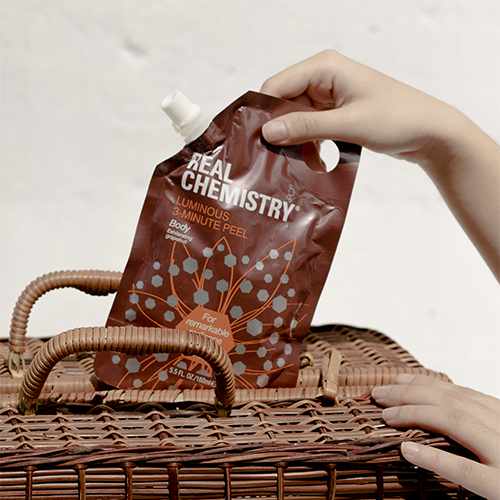Do you want an even tone and smooth skin, not just on your face but on your body too? A full body peel is one procedure you might want to consider. Here, I’ll discuss all the essentials including the procedure description, expected benefits, preparation tips, and even product selection and safety tips. While this guide is free of unnecessary jargon, it is informative, research-based, and practical. After reading this, you will know all the reasons for and against having a body peel and how it fits your skin goals.

What Is a Full Body Peel?
A full body peel is a procedure that employs chemical exfoliation to gradually polish away the dead and damaged skin to reveal the healthy skin underneath on larger body areas like the back, arms, legs, and chest. It is a common misconception that peels are less effective on the body. Because the skin is thicker, peels are actually a lot more effective. Beyond smoother skin, body peels also address hyperpigmentation, post-inflammatory hyperpigmentation, rough texture, breakouts, and even scars.
Key Full Body Peel Types and Ingredients
The use of body peels is more common with the use of:
Glycolic acid: classified as an AHA, this is a chemical agent that encourages a gentle but thorough exfoliation.
Lactic acid: Softer than glycolic, suitable for dry skin and even sensitive skin.
Mandelic acid: A larger AHA that is slower to penetrate the skin. Thus, it lowers the irritation risk.
Salicylic acid: A BHA well-suited for oily skin and acne-prone areas.
Trichloroacetic acid (TCA): Applied in medium depth peels for scars and dark marks.
Kojic acid and arbutin: Concerned with hyperpigmentation.
Retinoids: Used occasionally for increasing cell turnover in some blends.
Product formulations differ in acid strength, gel, liquid or mask form, and the presence of other calming or hydrating ingredients, such as rose extract.
Main Benefits of a Body Peel
Evens skin tone: Reduces dark spots, melasma, and sun damage pigmentation.
Rough and bumpy skin patches are smoothed: Enhances texture and alleviates keratosis pilaris or 'chicken skin.'
Body acne clears: Salicylic acid unclogs pores and lessens inflammation.
Stimulates collagen and elastin: Peels incite collagen synthesis and skin proteins for firmed, resilient skin.
Preps skin: Enhances the effectiveness of moisturizers and active ingredients applied after treatment as they are better absorbed.
Visible improvement occurs rapidly with light peels, whereas deeper peels require more time to reveal more dramatic improvements.
How to Choose the Right Body Peel?
Sensitive skin: Consider lactic or mandelic acid. Less risk for over-exfoliation.
Hyperpigmentation or dark marks: Formulations with kojic acid, arbutin, or TCA would be most effective.
Salicylic acid aggressively treats acne and oily skin conditions.
For rough, bumpy skin (keratosis pilaris), Glycolic and salicylic acid blends work well.
To tackle serious discoloration or deep scars, medium to deep peels are necessary. However, these peels require supervision and have significant downtime.
For safety and optimal results, a skin clinic and dermatologist are best suited for medium and deep peels. Always patch test first.
What Is The Process for a Body Peel?
The first step involves your skin being cleansed and oils removed.
The peel process starts with cleansing and stripping oil from the patient’s skin.
A brush or glove is used to peel gently layer by layer. It is left for a few minutes, the duration is individualized based on the product and skin type being used.
During the procedure, you should expect to feel slight tingling or a mild tight sensation.
The peel is neutralized with a special solution (or just water), and a soothing lotion or mask may also be applied.
Post procedure, there is notable redness or peeling, with duration dependent on the strength of peel. It ranges from a week to longer. Skin should be kept well hydrated, to avoid exposure to the sun and picking at shedding skin.
Benefits and Constraints
A full body peel enhances skin texture and evenness, making changes skin-wise, but not permanently. Sun protection, gentle scrubbing, and gentle exfoliating help maintain skin for a longer duration. Stretch marks and deep pigment marks can be faded but not removed completely. Other treatments like targeted serums or laser therapy along with peels give the best results for stubborn skin concerns.
Most Requested Clinic Peels
The chemical peel market, along with body peels, is on the rise. An industry report suggests a compound annual growth rate above five percent with more consumers opting for body peel exfoliation over resurfacing procedures. Most requested clinic peels are a mixture of glycolic and lactic acid for a balanced action with less irritation.
Conclusion
With the right method, full body peels can help renew skin using targeted and proven techniques. A noticeable change in skin texture and brightness is achievable pretty quickly. With diligent aftercare, lasting benefits can be maintained. Formulistically, think of full body peels as skin resetting, wherein texture, tone, and confidence are scientifically recalibrated.






Write a comment ...